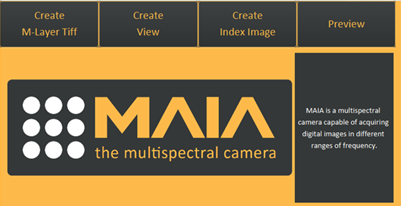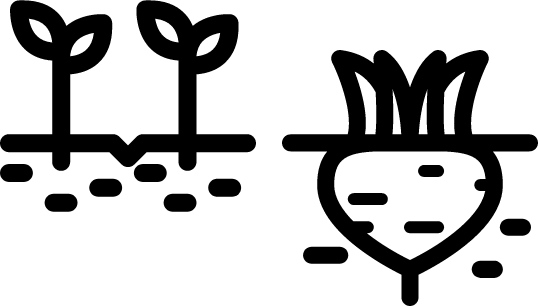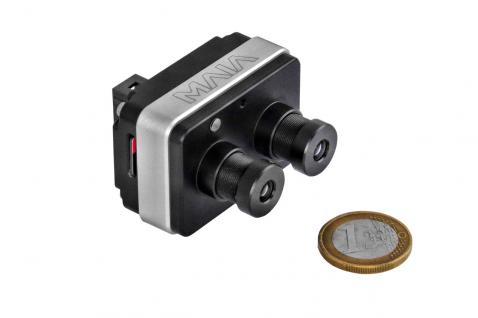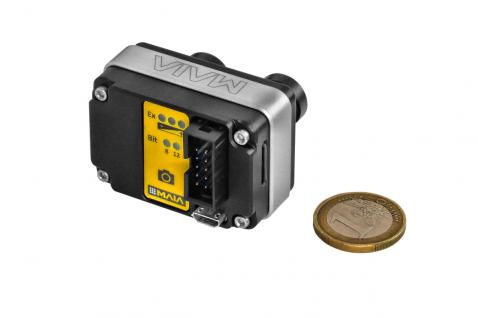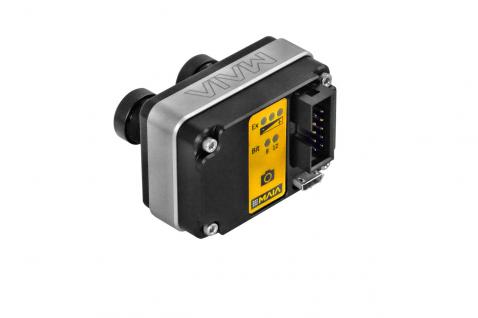Modular camera | MAIA M-2
Applications
|
|
|
|
|
Precision farming |
Vegetation indexes mapping |
Field healt status monitoring |
|
|
|
|
|
Environmental monitoring |
Pollutant or hazardous material leaking detection |
Overview
MAIA-M2 is the low-cost modular multispectral camera designed to be easily configured by the user according to it's project requirements. The camera can be scaled up at any time to build compact camera arrays by just adding further modules. A very large set of the most known multispectral indexes can be obtained using 3 cameras only. MAIA-M2 can also be used stand-alone, being the smallest and lightest dual-sensor camera available on the market. It is ideal for aerial and terrestrial vehicles (UAVs, drones, rovers), targeting manufacturers, integrators, and operators for precision farming and environmental monitoring applications.
MAIA is developed in Italy by Eoptis in conjunction with SAL Engineering and Fondazione Bruno Kessler.
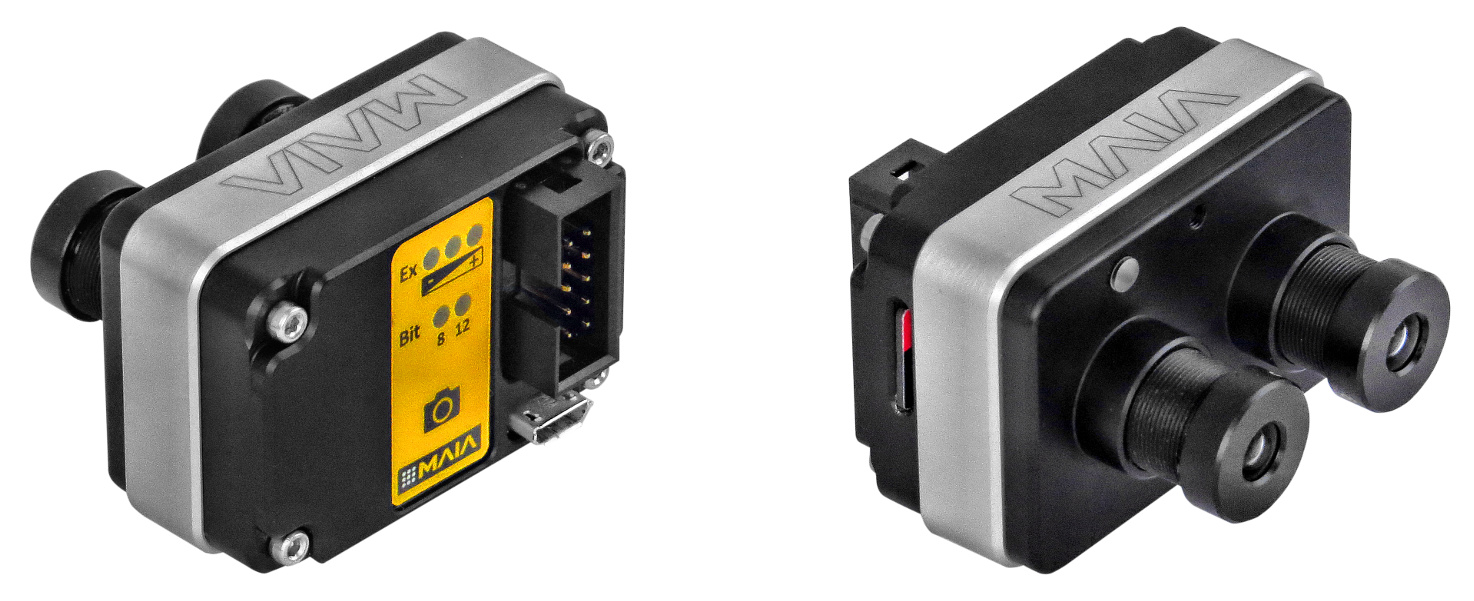
Benefits
- Low-cost but reliable precision farming and environmental monitoring
- Efficient Crop health and yield estimation by means of agronomic indexes (NDVI, GNDVI, SAVI...)
- Early detection of diseases or symptoms of nutrition deficiency
- Optimization of pesticide, water and fertilizer supply
Specifications
Each MAIA-M2 camera features two 1.2Mpix global shutter CMOS sensor with high-sensitivity, allowing the simultaneous acquisition of images free from motion artifacts at up to 1 frame per second. Each sensor is coupled with a band-pass filter with superior performance that precisely defines the spectrum of the radiation to be detected. The user can select filers among a large portfolio spanning the visible (VIS) to near-infrared (NIR) region, and pair them to generate several known agronomic indexes or specify custom configurations to deploy emerging applications. One of the MAIA-M2 sensor can be RGB color, creating a powerful 4-bands camera.
MAIA-M2 is capable of reliably capturing images and supports both free-run operations at a fixed 1Hz rate and an external trigger signal (voltage pulse). For exposure moment detection, MAIA-M2 outputs a strobe pulse that can be used with Post Processed Kinematic (PPK) systems.
The optimal exposure time of each sensor is automatically calculated and the user can adjust the brightness of the image to three levels, by means of the switch button on the camera. Images and parameters are stored on-board on a removable MicroSD card in RAW lossless format at a resolution of 8 or 12 bits per pixel. The MicroSD card can be accessed also via the USB interface, without removing it from the camera.
Multiple MAIA-M2 cameras can be connected together to create an array of sensors, expanding the possible indexes that can be obtained from the images. A Serial interface and the trigger/strobe signals allow to efficiently synchronize all cameras in the array and let them act as a unique entity.
The MAIA-M2 camera is only 34mm x 49mm x 46mm in size (including lens and connector protrusion) and weights 59g.
| Sensors | 2 CMOS sensor 1.2Mpix (1280x960) with global shutter and high-sensitivity Dual Monochrome or Mono+Color |
|---|---|
| Optical parameters | Geometric factory-calibration of each lens Focal length 8.0mm, f/# 2 Angle of view: 36° horizontal, 27° vertical, 44° diagonal Ground sampling distance (GSD): 3 cm* Field of view (FOV): 45m x 34m * * at 75m flight altitude above ground |
| Exposure | Full automatic exposure mode 3-step adjustable exposure target |
| Acquisition | Single shot or continuous (external trigger or fixed rate) Simultaneous shot of all sensors up to 1fps |
| Images | RAW 8 - 12bits per pixel File size: from 2.5MB to 4.8MB depending on the format Multi-layer / multi-band TIFF |
| Storage | Micro-SD class 10 U3 up to 32GB up to 12.000 images, corresponding to more than 3h of operations |
| Interfaces | USB2.0 interface for data download Trigger input and Strobe output sync signals Key switch or digital input pin to start/stop the acquisition Key switch to set image bit depth and brightness Serial port for advanced control |
| Size and weight | 49mm x 34mm x 23mm (~46mm including lens and connector) 1.9in x 1.4in x 0.9in (~1.8in including lens and connector) 59g - 2oz |
| Power | 5-9VDC, 1A peak, ~2.5W typical |
| Environmental | Operating temperature 0-40°C,32-104°F Operating humidity 20-80% RH non-condensing IP50 protection rating |
Most used filters and models
The basic camera for precision farming applications is the MAIA-M2-V16 version with RGB color sensor and NIR band. It allows to compute the main vegetation indexes in their wide-band form and have the color image immediately available without processing.

In order to have narrow-band indexes, an array of two MAIA-M2 cameras is recommended. The M2-V05 and M2-V14 array with Blue, Green, Red and NIR bands allows the user to reliably compute the main vegetation indexes as well as several other application-specific indexes. The RGB color image can be also obtained by post-processing. In case the Red-edge band is of interest, the M2-V10 and M2-V14 array is better suited.

The array of three MAIA-M2 cameras (V01, V06 and V15), with the Violet, Blue, Green, Red, Red-Edge and NIR bands, enables to further expand the detection in the violet region. Indexes involving the Red-edge band are also covered and the narrow-band RGB color image can be obtained by post-processing. This set-up allows to compute an extensive set of application-specific indexes.

Filter portfolio
Beside the most used configurations, the MAIA-M2 can be specified drawing from a list of high-grade bandpass filters that are usually available on stock and can be selected at the time of order. Other custom bands are available and bespoke designs in the 400-950nm region are also possible with limited extra costs. Please contact us for further information.

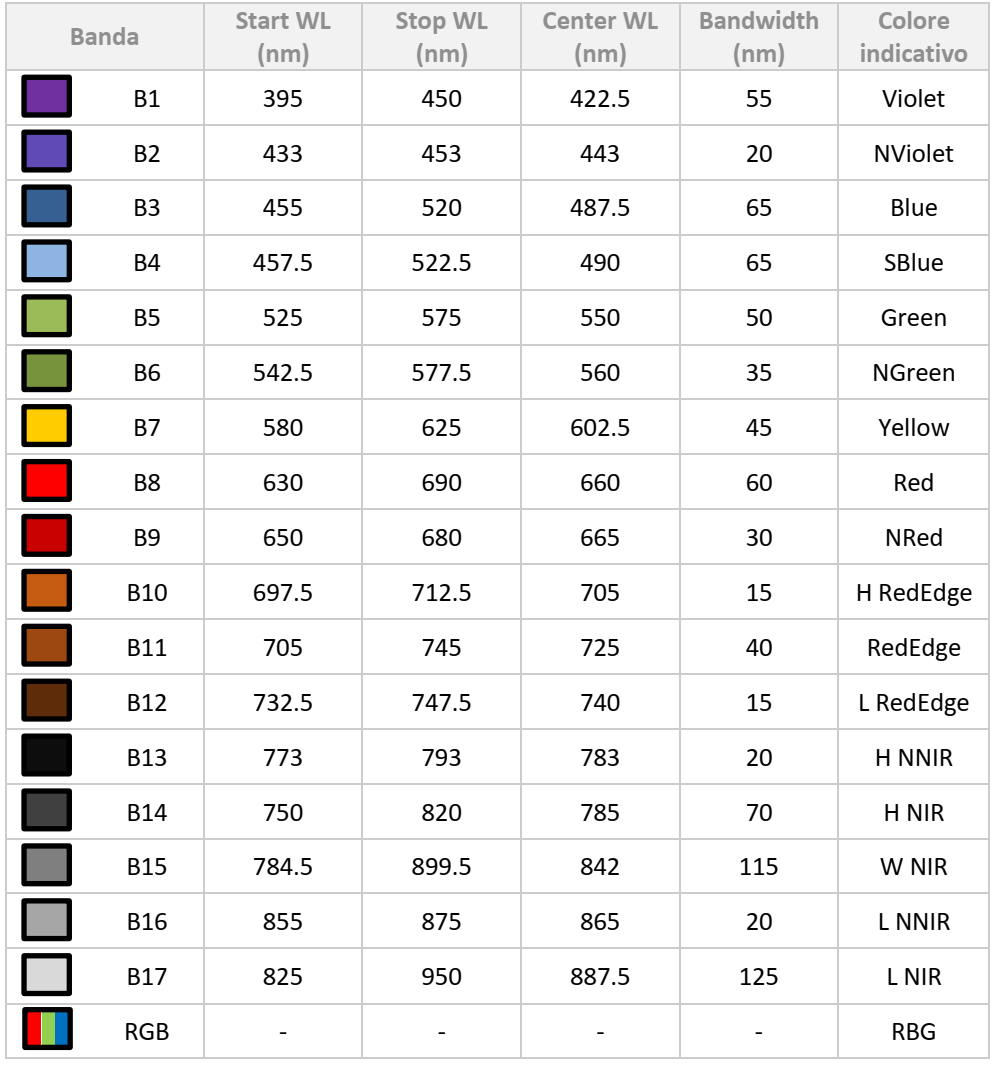
Camera models
The choice of the filter pairs for the MAIA-M2 camera is usually made according to the most widely used multispectral indexes with two bands, or on the basis of the specific needs of the multispectral survey. These are some of the possible combinations, optimized for the calculation of specific indexes.
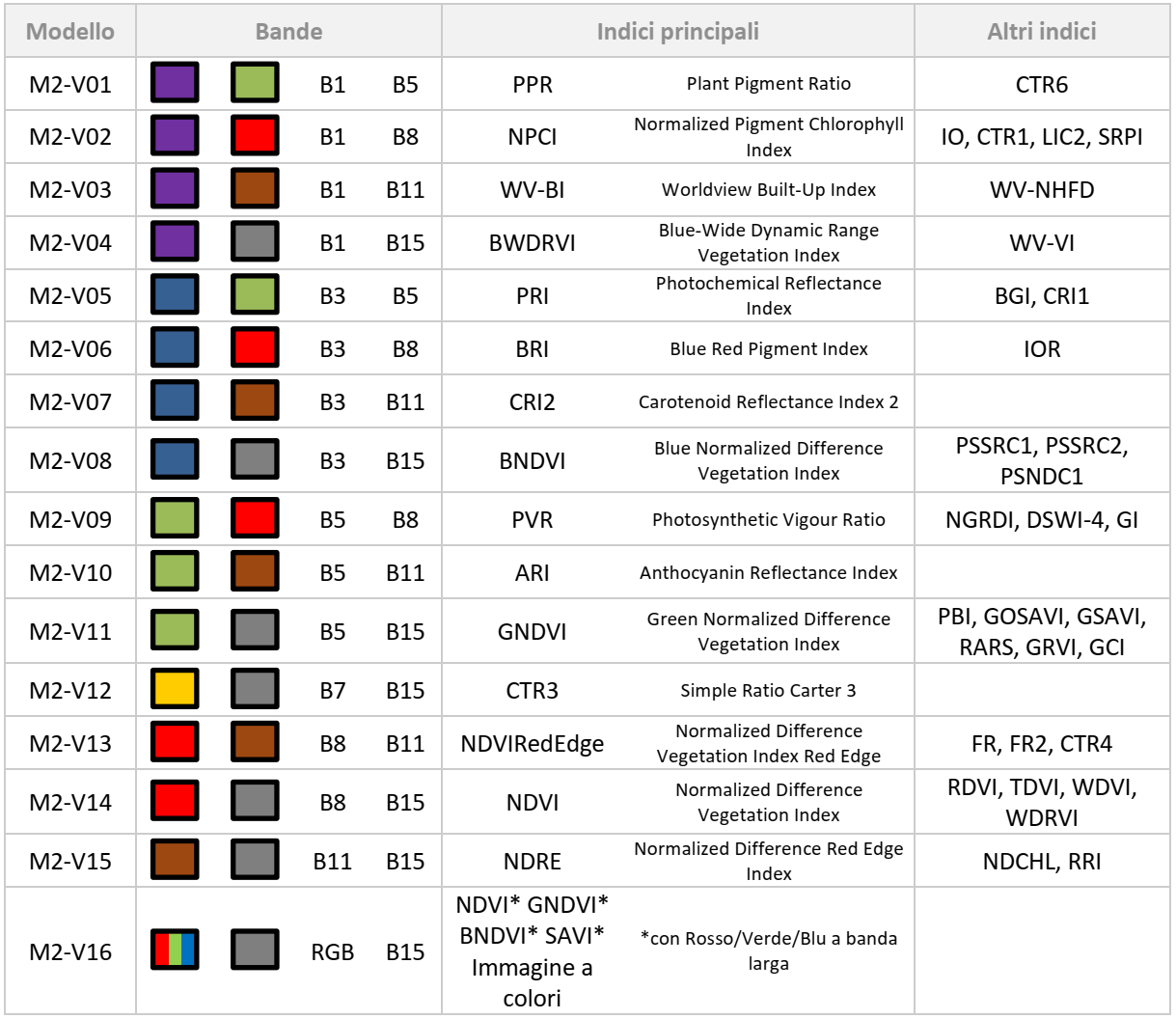
Camera arrays
Multiple MAIA-M2 cameras can be arranged to form an array. The following table shows some combinations of 2, 3 or more MAIA-M2 cameras, useful to allow the calculation of many of the main multispectral indexes. A large set of known indexes can be obtained using only 3 cameras and adding further cameras new indexes can be created to address emerging applications.
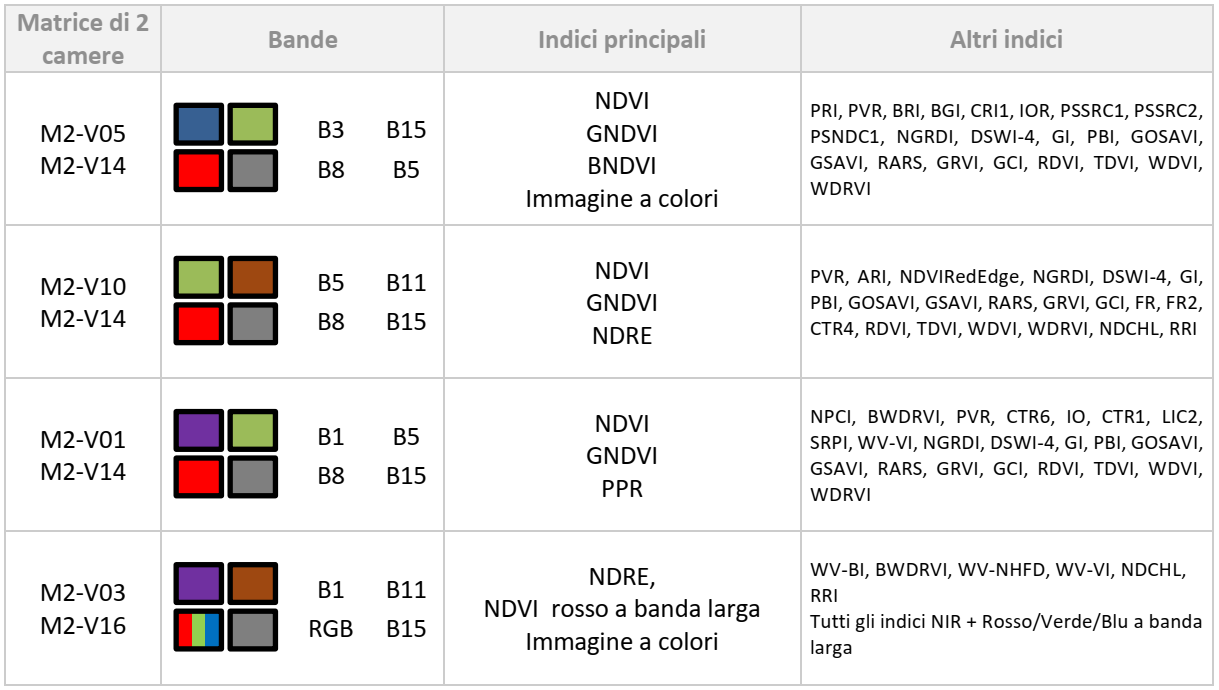
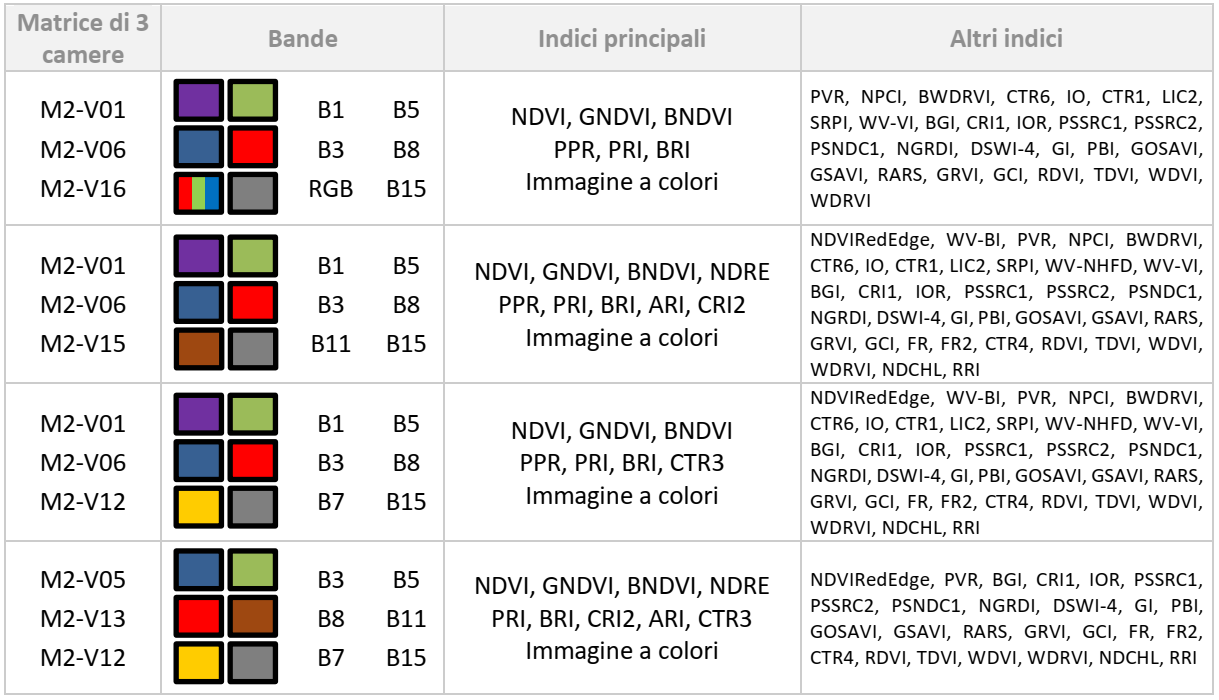
Software
The MAIA MultiCam Stitcher Pro pre-processing software is bundled with MAIA-M2 and it allows the user to merge the single-band images at each shot into a unique multi-layer image with a typical pixel-to-pixel accuracy. The software features also the computation of standard indexes (NDVI, SAVI, …) and the user can easily define custom indexes. The multi-layer images can be exported to formats widely accepted by third-party advanced analysis software.
